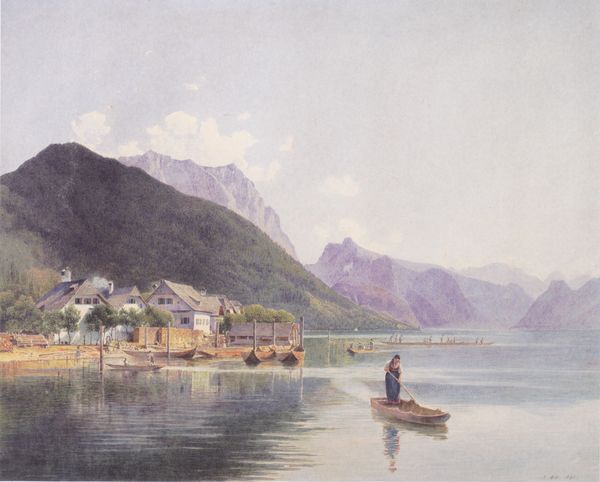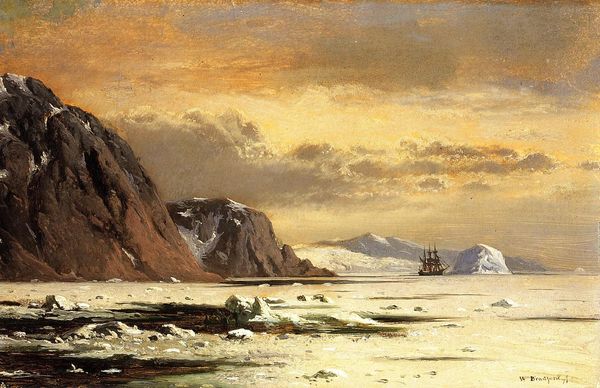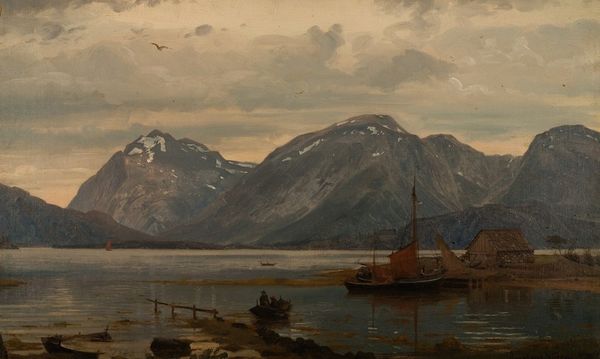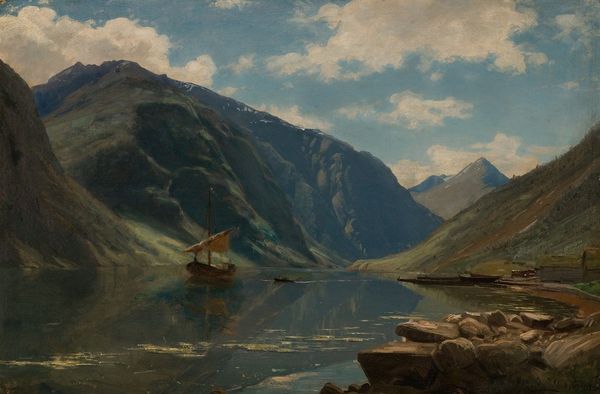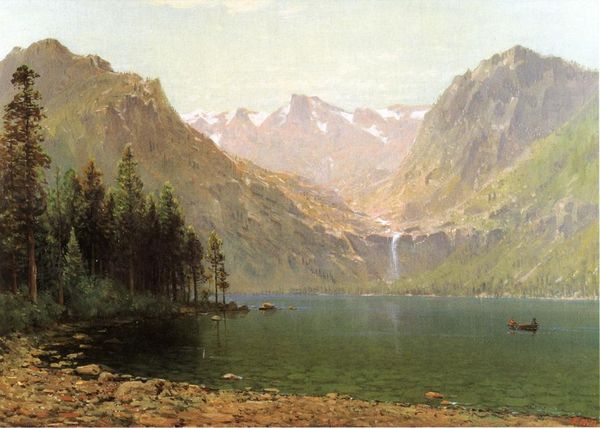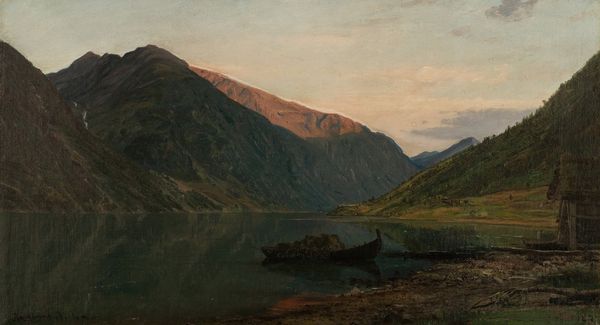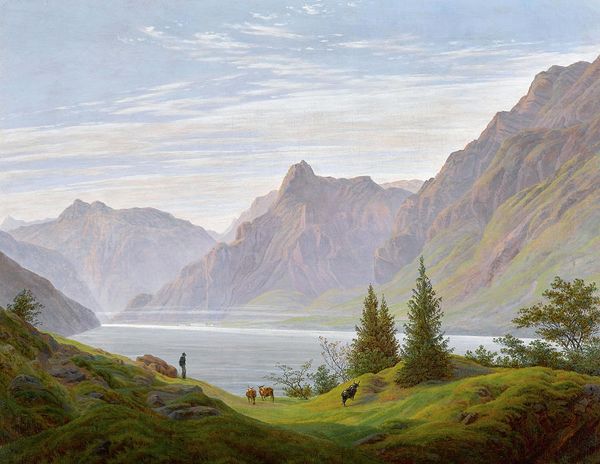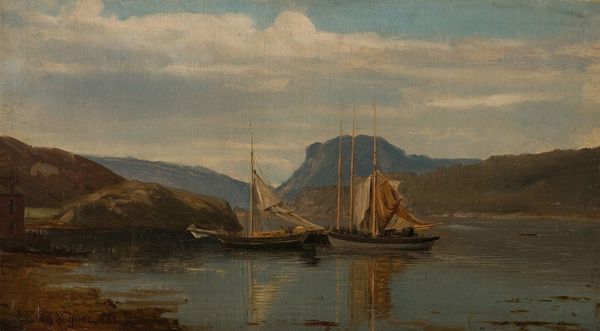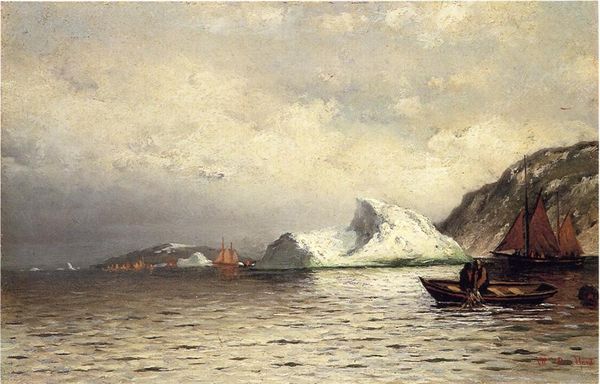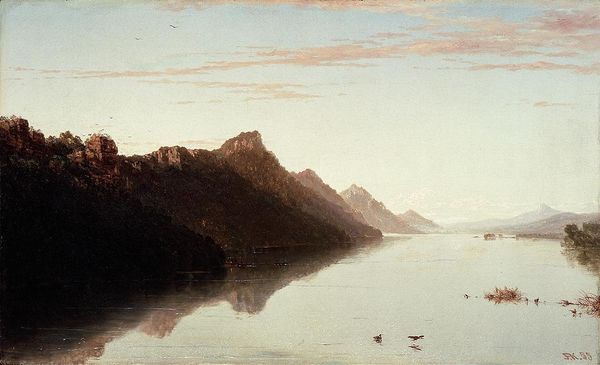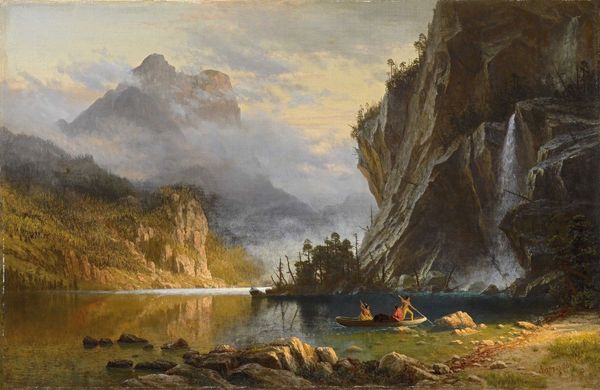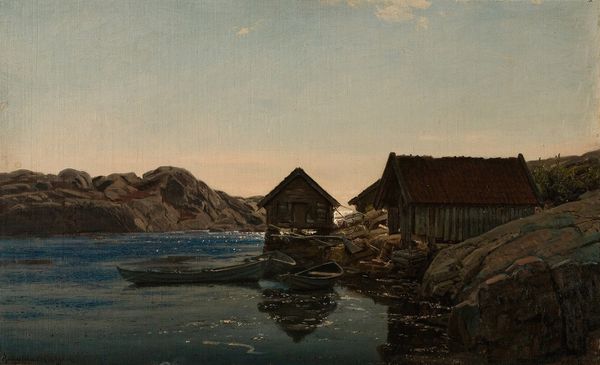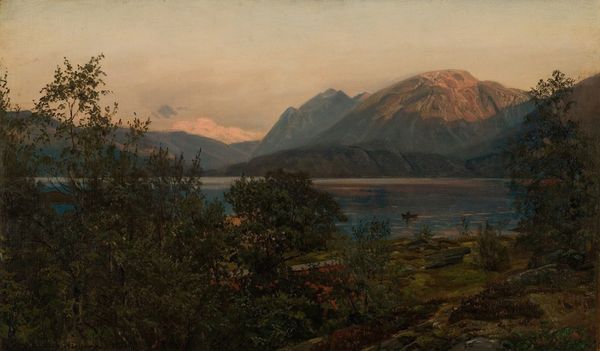
Copyright: Public domain
Editor: This is Lev Lagorio’s *Fjord in Norway*, painted in 1899. The way the light catches the water and reflects off those monumental mountains is just breathtaking. What do you see in this piece beyond the immediate beauty? Curator: Well, I see a landscape that’s not just a pretty picture, but a representation of a specific time and place grappling with social and economic shifts. The late 19th century was a period of intense industrialization and urbanization, even in relatively isolated places like Norway. Editor: How does that context show up in the painting? Curator: Look closely. The small village nestled by the fjord, the boats on the water – these are signs of human activity, but also potential markers of transition. Is this a celebration of the enduring strength of nature, or a commentary on the encroachment of modernity? Consider, too, the lack of human figures dominating the landscape. Whose story isn't being told here, and why might that be? Editor: So, you’re saying the painting prompts us to consider the relationship between the natural world and human intervention, and perhaps who benefits from the exploitation of such beauty? Curator: Precisely. Lagorio isn’t just painting a landscape; he's presenting a scene ripe with implications about our relationship to the environment and the social structures intertwined with it. The Impressionistic style, while seemingly focused on aesthetics, becomes a tool to capture the fleeting moment of this transition. How does thinking about it that way change your reading of the work? Editor: It definitely makes me see it less as a simple landscape and more as an open-ended question about progress and its impact on the environment and those who inhabit it. It encourages me to be more critical about who is visible and invisible in these grand narratives of art and history. Curator: Exactly! It is crucial that we continuously question whose perspectives are prioritized in these landscapes, encouraging us to reconsider what stories are not present in the work and its place in the history of art.
Comments
No comments
Be the first to comment and join the conversation on the ultimate creative platform.
